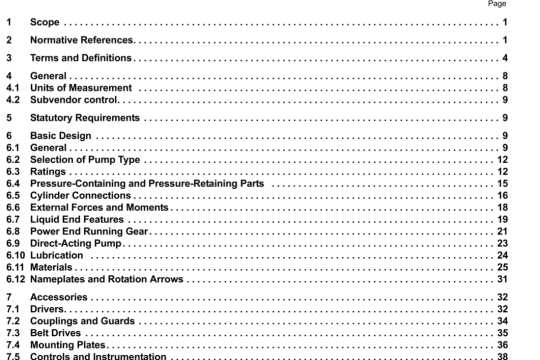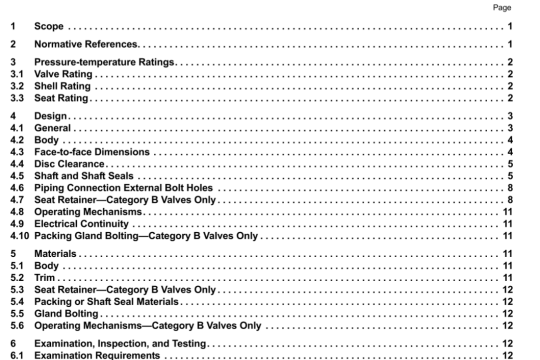API STD 2560:2003 pdf download
API STD 2560:2003 pdf download.Reconciliation of Liquid Pipeline Quantities.
6.5.6 Meter factors usually behae rn a predictable way. If operating conditions arc essentially constant and wear is not cxcesivc. meter faciw ma lx plotted on cons enteonal control charts with warning. ictiOfl and IOkIaflX limits. However, if meters are subject to variable operating conditions andior liquids with different physical pmpernes. their control charts will exhibit enough natural variation to dilute the value of warning and action limits.
6.5.7 Meter factor patterns on control charts should he rrv.ccd to dctcrminc if a meter (I) is about to go out of tolerance or (2) is developing an abnormal pattern or trend. If either of these occurs. the meter should be inspected for wear or damage. Some companies set a fixed meter factor tolerance for mandating meter repair.
6.5.8 For multi-functional meters. interpretation of control charts is not straight forward. The patterns on the charts arc cornpisites of several sub-patterns s hich are dictated by t1os rate, temperature. pressure and liquid properties. Insofar as possshk. the data for such meters should be broken into separate plots of meter factor segregated by one variable, such as liquid type. with other conditions being as newly constant as pos.sshk.
6.5.9 Even when charts are broken out by crude tpe, cons-cntsonal control charts may not be adequate. because in order to get enough data v ith one crude type. it may be necessary to accumulate single meter factors or small groups of meter factors for a given crude which ar-c separated from each other by significant lengths of time. As a result, each subsequent factor or group of factors may be affected by meter use and wear between iactors This leads to a trending situation. and trending charts may be required to depict the data.
6.6 ThENDING CHARTS
6.6.1 Trending charts may he used when data exhibit a definite upward or downward trend and do not hoscr around a simple horuontal mean value. Such charts may be shovn as a trending run chart merely to show a trend in the data, or may resemble a control chart with lines representing average performance (similar to “mean) and control limits that follos the upward or downward trend of the data.
6.6.2 Meter fator charts are often trending chait’. as meter factors generally tend to increase in a regular fashion with time due to ear in a meter.
6.6.3 An eampk of a trending control chart is shown on Figure 8.
6.7.5 Somctimc i is helpful to kno how much Iwo sariaMes interact with each other. One vanabk is the “independent variable” and the other is the “dependent variable”. The value of the dependent banaNc depends on the value of the independent vanabk. In other words, the dependent van- able will change every time the independent variable changes. If the dependent s-1triabk is chuied b some other influence. the independent variable will not change as a resuh. For example. a meter factor can be changed by changing flow rate. but flow ratc cannot he changed by changrng meter factor.
6.7.6 The relationship between two variables is called the “correlalion and may be “strong”. in which case the dependent anable changes in a very predictable manner with changes in the intkpcmlent variable, or may be “weak”, in which case the dependent variable tends to change with the independent vanahk but the amount of change is not predictable.
6.7.7 The strength of the corrdat ion can be measured statistically ith the “correlation cfficient”: The procedure for calculating the correlation cfficienL is shown in Appcndi A.
6.7.8 II should be noted that even though a strong con’elation exists, if the slope of the atwiated regression line is very flat the correlation is rdaucly inignificant
6.8 CUMULATIVE CHARTS
6.8.1 Cumulative charts arc similar to trending charts but plot the cumulative values of some variable such as. LI G vs. time. The cumulative value is obtained by arithmetically (i.e.. keeping the pIus and minus signs) adding the value of each data point to the sum of all the data points preceding it in a sequence of data.
6.8.2 The data in cumulative charts do not hover around a central mean value.




